Zoo Lessons
Last week Ray and I spent an exciting day at the Chattanooga Zoo with our daughters and their families. We are making use of the grandparent passes we bought last year. Our passes have included quarterly copies of the zoo’s magazine, Chattazooga. Betsy the Anteater was on the cover of the spring issue.
We enjoyed the peacocks hanging out in Betsy’s exhibit area, . . .
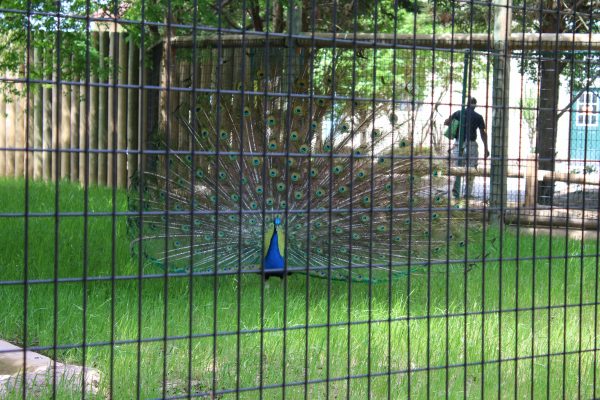
. . . but we never saw Betsy. She was hanging out inside.
As I thought about writing this post, I wondered where I could find a picture of an anteater. With low expectations, I searched Library of Congress. To my surprise, I found a photo. It wasn’t a real anteater though, just a six foot long, three foot high bronze statue.
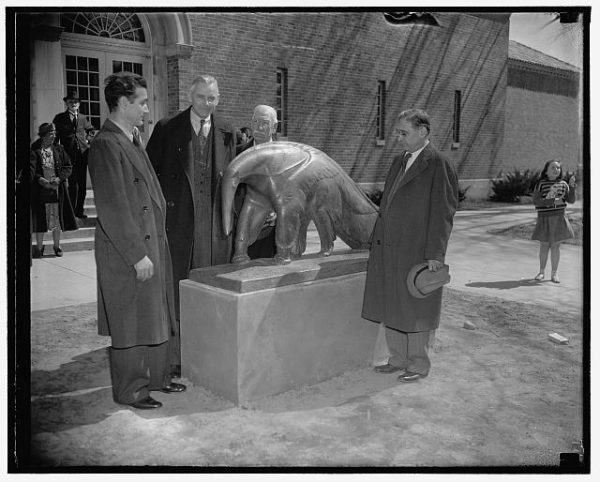
As we stood in front of Betsy the anteater’s exhibit, we met zoo staff member Matt who was waiting to see Betsy, too. Before long he was giving us a wonderful lesson about zoos and anteaters and peacocks.
Peacocks roam all over the Chattanooga Zoo. I had already spied this one on a rooftop.
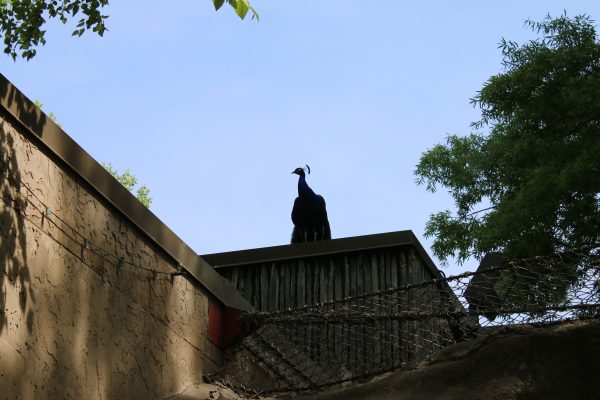
Later I saw this one resting in a secluded place . . .
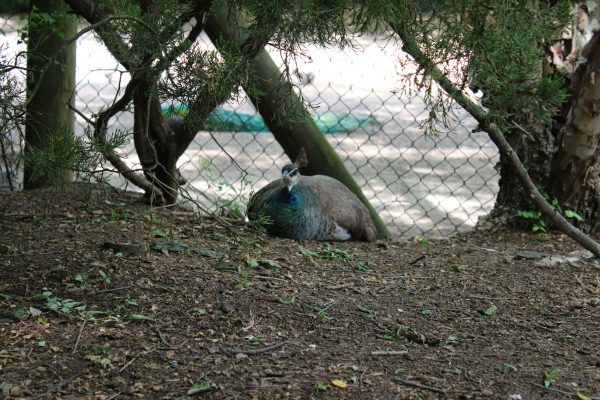
. . . and this one resting out in the open.
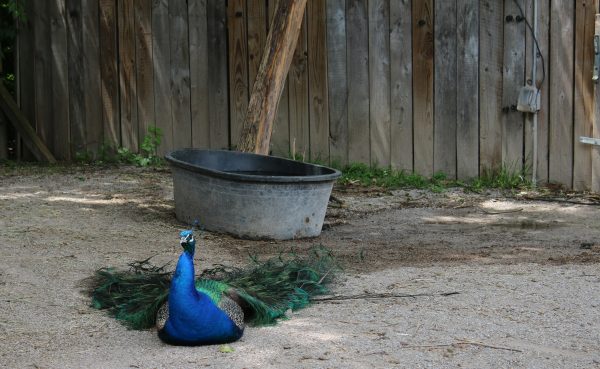
With so many peacocks all over the place, I wondered if they breed in the zoo. Matt told us that they do. About a dozen peacocks hatch each year and about half survive. The adult peacocks know better than to wander into the exhibits with the jaguars and other big cats, but the babies don’t. Matt thinks it’s a good thing that the big cats get to eat the occasional peacock baby because they are having the rare chance of having the kind of experience they would have in the wild.
Matt told us a wild story about the day that the zoo’s hawk caught a bird. Zookeepers were thrilled with the hawk’s opportunity, but a patron who was watching got very upset. She did not want that kind of thing happening in front of her at a zoo. She brought formal complaints and caused the zoo a bit of consternation.
I was most fascinated by Matt’s story about how anteaters eat in the wild. They go to one ant hill and eat about 2,000 ants. Then, they go to another ant hill and eat 2,000 more. On and on they go until they get enough. They never eat all the ants in one ant hill. They leave the ant hill healthy. After the hill has had time to repopulate, the anteater will return for another dinner. They know better than to destroy their food source.
“They’re conservationists,” I said. They know how to do what we don’t know how to do, Matt told me.
I thought some of you might have children who love animals and would like to work at a zoo. I asked Matt’s permission to write about him and to publish his picture. He told me that his college work was in veterinary science and wildlife management. Here’s Matt.
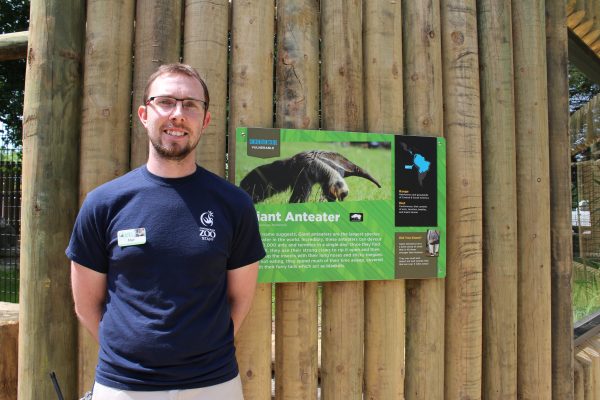
When I open my eyes to God’s creation, I marvel at His power, His sense of humor, His love for beauty, His creativity, and His wisdom. Here are some of my favorite animal portraits from our trip last week. Here are two chimpanzees.
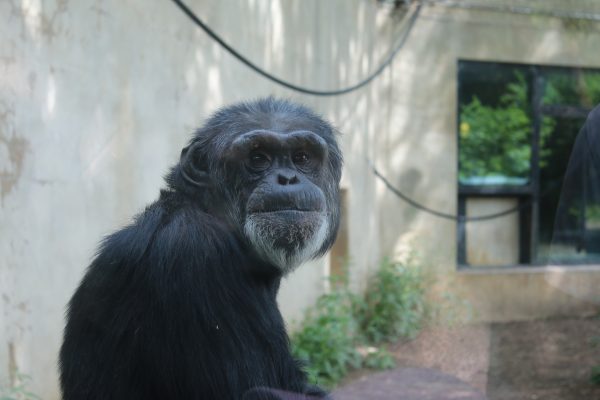
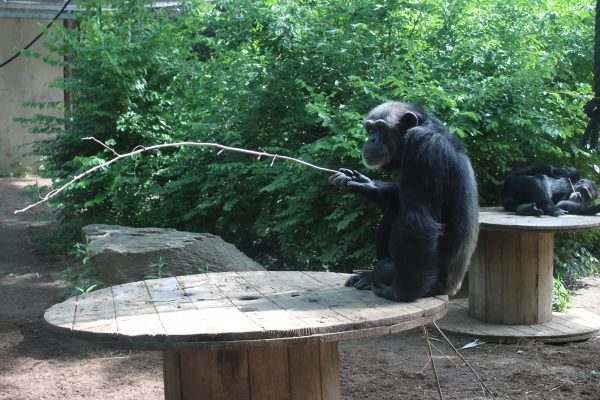
We enjoyed petting the goats.
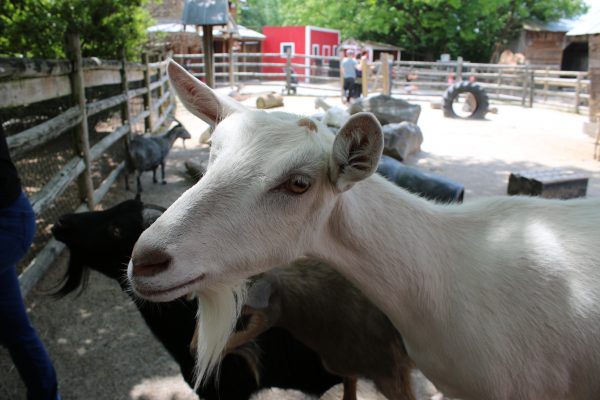
I think this is a llama. Am I right?

This beautiful, curious creature is a sand cat, the world’s only desert cat, as I recall. He came to the glass to look out at us over and over again.

The red panda was napping.
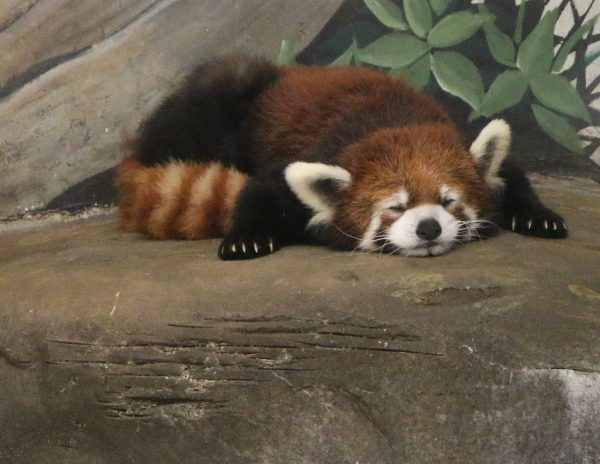
This meerkat stood faithful at his post.

In Romans 1, God tells us that we understand His eternal power and divine nature through what He has made.
For every beast of the forest is Mine,
The cattle on a thousand hills.
I know every bird of the mountains,
And everything that moves in the field is Mine.
Psalm 50:10

